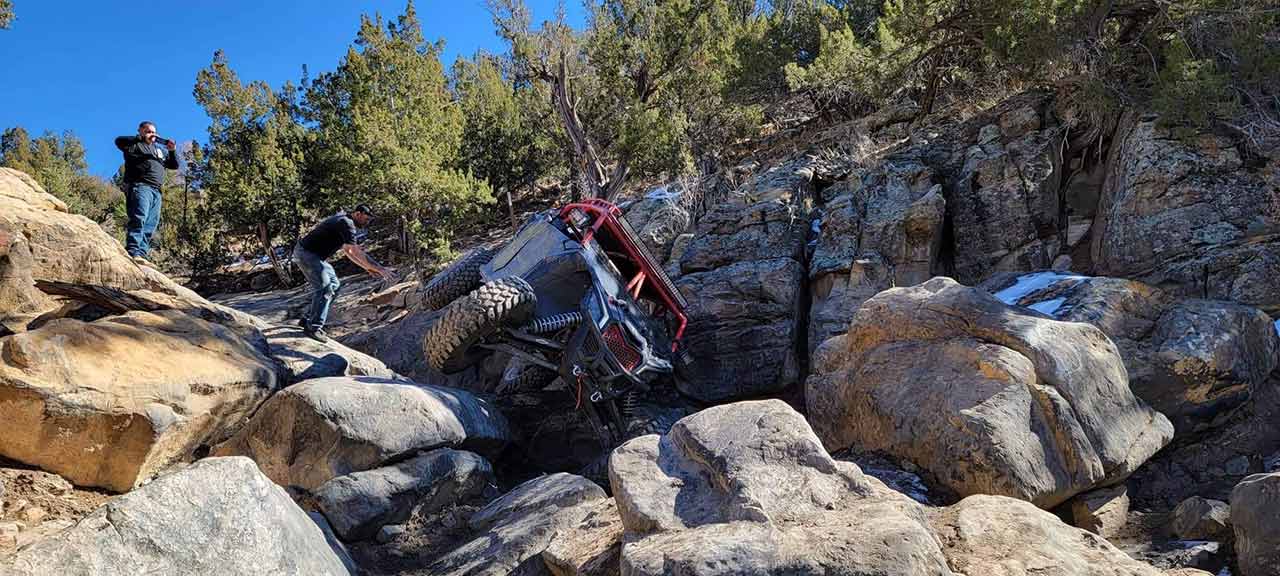Let’s be honest, getting stuck is part of the off-road experience. Whether it’s deep mud, thick sand, or a tricky rocky trail, your UTV will find itself in a tough spot eventually. I’ve been there, and I’ve learned that knowing how to recover your side-by-side safely is absolutely crucial. This guide is all about giving you the knowledge and confidence to get yourself unstuck, protect your machine, and keep the adventure going. My goal is to provide practical, real-world advice that you can actually use on the trail.

Understanding UTV Recovery: What You Need to Know (Before You Get Stuck!)
UTV recovery techniques and improving your ride are essential skills for any side-by-side enthusiast. Being able to recognize the signs of being stuck (or about to be stuck) is the first step. It allows you to react quickly and prevent further problems. Here’s what to look out for:
- Tires Spinning Without Traction: This is the classic sign. If your tires are spinning but you’re not going anywhere, you’re either stuck or about to be. Don’t just floor it! (More on that later.)
- Loss of Momentum in Mud, Sand, or Snow: Feeling your UTV slow down, bog down, or sink in soft terrain? That’s your warning sign. Act before you’re completely immobilized.
- Vehicle Leaning or Tilting: If your UTV is at an odd angle or leaning to one side in a rut, you’re at risk of rolling over or damaging components. This is a serious situation that requires careful recovery.
Key Techniques for UTV Recovery (Getting Yourself Out of Trouble)
Proper UTV off-road recovery is about using the right techniques to minimize damage and keep yourself safe. Think of it as a problem-solving process, not just brute force. Here are some proven methods, paired with the right UTV recovery gear and safety equipment:
- Stop Spinning the Wheels! This is crucial. Continuing to apply excessive throttle when you’re stuck will only dig you in deeper. Let off the gas, take a deep breath, and assess the situation.
- Distribute Weight Effectively: Sometimes, a slight shift in body weight (or unloading some cargo) can make all the difference. On loose surfaces, reducing weight in the stuck area can help your tires find traction.
- Use Proper Recovery Tools: A reliable winch, tow strap, or recovery rope is your best friend. Always attach them to designated recovery points on your UTV. Don’t assume any random metal piece is strong enough for pulling.
- Find a Stable Anchor Point: When using a winch, you need a strong and stable anchor point – a sturdy tree, another vehicle, or a dedicated recovery anchor. This ensures you can pull your UTV out without damaging the anchor or your machine.
Putting it into Practice: Steps for UTV Recovery (A Step-by-Step Guide)
If you want to dive deeper into these techniques, check out our UTV recovery technique guides for additional insights. Here’s a simple step-by-step outline to get you started:
- Evaluate the Situation: Before you do anything, take a moment to assess how deeply you’re stuck and the surrounding terrain. This helps you choose the best recovery method quickly and safely.
- Select the Appropriate Strategy: Decide whether you’ll use winching, towing, or simply redistributing weight and using gentle throttle to regain traction.
- Proceed with Care and Safety: Position bystanders at a safe distance, communicate your plan, and start the recovery process. Keep an eye out for shifting weight or sudden changes in the terrain. Slow and steady wins the race!
Best Practices for UTV Recovery (Preventing Problems Before They Happen)
An ounce of prevention is worth a pound of cure, right? Here are some preventative measures to reduce your chances of getting stuck in the first place:
- Plan your route: Research terrain conditions ahead of time. Know what you’re getting into!
- Inspect your UTV’s tires: Make sure the tread pattern is suitable for the type of environment you’ll be riding in.
- Always carry recovery gear: A winch, tow straps, and other basic recovery gear are essential for any off-road adventure.
- Practice moderate driving: Avoid reckless maneuvers that can bury your tires in challenging terrain. Smooth and controlled is the way to go.
Seeking Further Improvement and Expert Guidance (When to Call for Help)
If your UTV is severely damaged, or if you’re facing extreme off-road conditions that put you at risk, it’s time to seek UTV recovery professional guidance. Trained experts can assess the situation, use advanced recovery methods, and even help you upgrade your UTV for more demanding rides. Don’t be afraid to ask for help!
And remember, practice makes perfect. Familiarize yourself with these techniques by practicing in safe, controlled environments. Over time, you’ll build the confidence to tackle increasingly difficult off-road challenges.
Main Points to Remember (The Key Takeaways)
Effective UTV recovery comes down to understanding your vehicle, recognizing when you’re in trouble, and using proven methods to get free. Keep these points in mind:
- Stay calm, reduce throttle, and plan your recovery. Don’t panic!
- Distribute weight properly and use the right gear.
- Learn basic techniques and step-by-step methods before hitting extreme trails.
- Know when to call in professional help. It’s not a sign of weakness; it’s a sign of smarts.
By putting these points into practice, you’ll ride with greater confidence, avoid costly damage, and have more fun on every off-road adventure. Get out there and explore!
